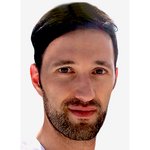When COVID-19 hit New York City – A research stay experience of a different kind
To go in quarantine and be on pause or work on SARS-CoV-2? That was the question I needed to answer when the pandemic hit New York.
Back in February, with support of the Lab Exchange Program of the NCCR RNA & Disease, I started a research stay in the laboratory of Dr. Thomas Tuschl at the Rockefeller University in New York City. I was really looking forward to see some of my old colleagues, spend time in this scientifically highly stimulating environment and of course enjoy and absorb the energy of this incredible city.
March 1, the first confirmed case of the coronavirus is recorded in Manhattan. Two weeks and thousands of cases later NYC became the hot spot of Covid19 leading to a shutdown of the whole city including the Rockefeller University. I decided to join the group of scientists working on the virus and was granted permission to access the laboratory during the university lockdown. The city itself was dead: no traffic, empty buildings and empty sidewalks. But there was this steady sound of ambulance sirens and the long queues of sick people in front of public hospitals, later joined by refrigerated trucks to hold the bodies of the dead.
Our mornings in the lab would usually start with studying the new numbers on the John Hopkins coronavirus map and discussions on the latest news and data regarding the virus. I would check for same day flights back to Europe, in case of getting sick. From all the bad news from our colleagues in the NY hospitals, it was clear that healthcare wasn’t really guaranteed anymore. After a while we got used to the situation and I was happy to be able to still work in the laboratory. Additionally, Tom was doing his best to keep our motivation high by providing his tasty self-made ice-cream and Sake.
A part of the laboratory focused on isolating all compounds of the viral replicon and I choose to work on the RNA dependent RNA polymerase (RdRp). The exciting times started when the inactivated virus arrived and we were able to isolate its RNA to clone the sequences of our interest. I started to express and purify the RdRp (encoded by non-structural protein 12 [nsp12]) that functions as a RdRp-holoenzyme (comprising nsp7, nsp82 and nsp12). I investigated the biochemical properties of the RdRp complex, the action of inhibitory compounds like Remdesivir and also begun to set up a high-throughput drug screening to aim for new compounds. At the same time, I joined a collaboration of the labs of Elizabeth Campbell, Seth Darst, Brian Chait and Tarun Kapoor. Together we solved the structure of the SARS-CoV-2 holo-RdRp with an RNA template product in complex with two molecules of the nsp13 helicase [1]. This new structural template will be crucial for drug developers to find new compounds that can efficiently inhibit the viral replication process and gives us new insights of the replication mechanism.
Nevertheless, the happiness of our achievement was modest. The killing of George Floyd sparked heavy protests that impacted our lives in New York as strong as the virus did months before. Walking the surreal streets of the Upper East Side were the Rockefeller University is based, you could find broken windows, boarded up buildings, empty storefronts for rent and abandoned restaurants that had to give up their business.
Scientifically my stay was an intensive and exciting time working under great pressure to find something meaningful in such an important topic, even under the adversities like closed facilities or delayed orders. On a personal level it was stressful and sad, seeing many people in fear and hardship, and with a constant awareness of the thousand COVID victims around us. Or seeing friends that lost their jobs, who had to quit their apartments and move away from NYC.
For the future I hope to get the chance to visit again and see the city and the people recovered from this calamity, as I hope so for everyone in the world. Lastly, I also want to take the opportunity to thank for the support of the NCCR RNA & Disease and Prof. Markus Stoffel that gave me a lot of security during these uncertain times. Likewise, many thanks to Tom and his laboratory that feels like a little family to me.
[1] Chen et al. (2020), Cell, 182(6), 1560-1573.e13
Text: Hasan Vatandaslar
